Exploring Gyeongbokgung Palace, the National Folk Museum, Bukchon Hanok Village, and Gwangjang Market reveals a tapestry of Korea’s cultural heritage that captivates visitors. Gyeongbokgung, with its regal architecture and deep historical roots, invites curiosity about the Joseon Dynasty. The adjacent Folk Museum enhances this journey, offering insights into daily life through thoughtfully curated exhibits. As one wanders through the narrow lanes of Bukchon, the charm of traditional hanoks unfolds, setting the stage for the sensory experience that awaits at Gwangjang Market. What culinary delights and hidden stories might these vibrant spaces still hold?
Key Points
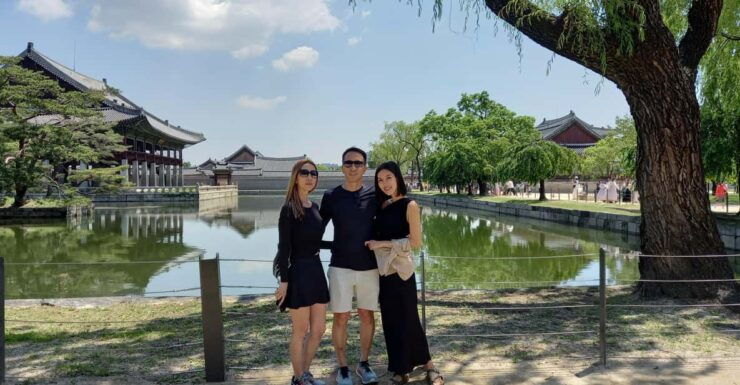
- Gyeongbokgung Palace, the first royal palace of the Joseon Dynasty, features stunning architecture and historical significance, making it a must-visit site.
- The National Folk Museum offers insights into the daily lives and customs of the Joseon Dynasty through curated exhibits and interactive installations.
- Bukchon Hanok Village showcases approximately 1,000 traditional hanoks, providing an immersive experience of Korea’s architectural heritage and cultural identity.
- Gwangjang Market is known for its vibrant street food scene, offering traditional Korean dishes and a lively atmosphere that highlights local culture.
- A comprehensive tour includes visits to these sites, with knowledgeable guides enhancing the experience and providing context on Korea’s rich history.
Gyeongbokgung Palace Overview

Gyeongbokgung Palace, the first and main royal palace of the Joseon Dynasty, stands as a magnificent testament to Korea’s rich history and architectural elegance.
Built in 1395, it showcases the beauty of traditional Korean architecture, with its grand gates, intricate roofs, and serene gardens.
Visitors often marvel at the stunning Geunjeongjeon Hall, where royal ceremonies once took place, and the tranquil Hyangwonjeong Pavilion, reflecting in its surrounding pond.
As Korea’s cultural heart, the palace embodies the principles of Confucianism that shaped the Joseon Dynasty, distinguishing it from neighboring influences.
With its historical significance and breathtaking aesthetics, Gyeongbokgung Palace invites everyone to explore the essence of Korean heritage and the stories woven into its walls.
Like museums? Other Seoul cultural attractions we've reviewed
National Folk Museum Insights
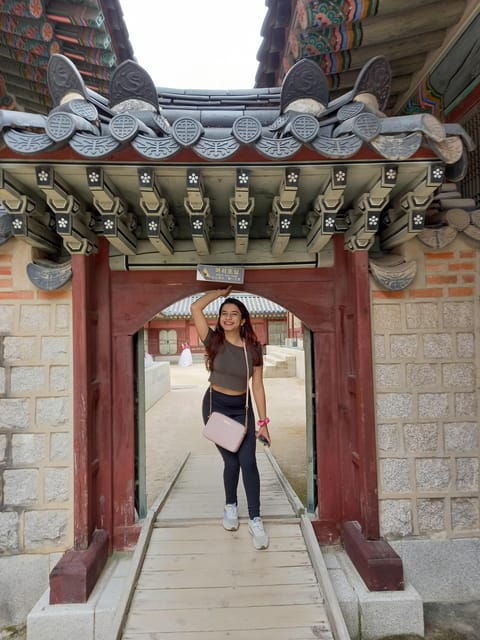
The National Folk Museum of Korea offers a captivating glimpse into the everyday lives, customs, and traditions of the Joseon Dynasty, making it an essential stop for anyone seeking to understand Korea’s cultural heritage.
Visitors wander through thoughtfully curated exhibits showcasing traditional clothing, household items, and agricultural practices that defined the era. Each display vividly illustrates the rituals and daily activities that shaped Korean society.
The museum also features interactive installations, allowing guests to experience historical customs firsthand. With knowledgeable guides enhancing the experience, attendees gain valuable insights into the significance of Confucian values and communal living.
This enriching journey through Korea’s past not only educates but also fosters a deeper appreciation for the nation’s enduring traditions.
Exploring Bukchon Hanok Village
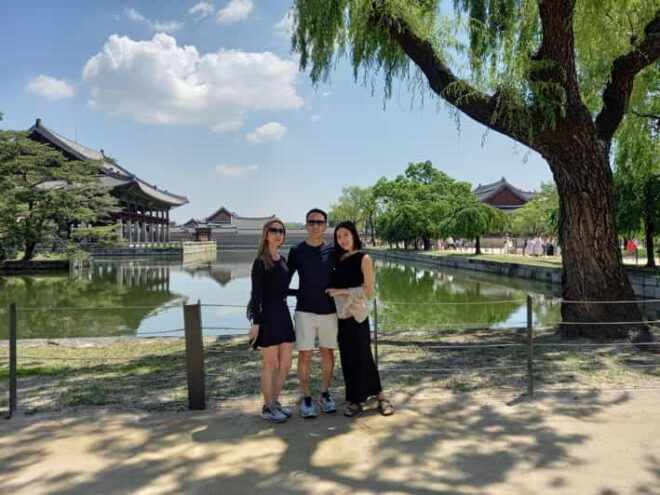
Nestled between the majestic Gyeongbokgung Palace and the vibrant streets of modern Seoul, Bukchon Hanok Village showcases a stunning collection of traditional hanoks that transport visitors back to Korea’s rich architectural heritage.
With about 1,000 hanoks, this largest traditional house village offers a unique glimpse into Korea’s past. Visitors wander through narrow alleys lined with beautifully preserved wooden houses, each uniquely designed with curved roofs and intricate details.
Charming galleries, tea houses, and cultural shops dot the landscape, inviting exploration. As they stroll, guests can admire breathtaking views that blend the serene traditional architecture with Seoul’s dynamic skyline.
Bukchon Hanok Village isn’t just a destination; it’s an immersive experience that enriches understanding of Korea’s cultural identity and history.
Gwangjang Market Experience
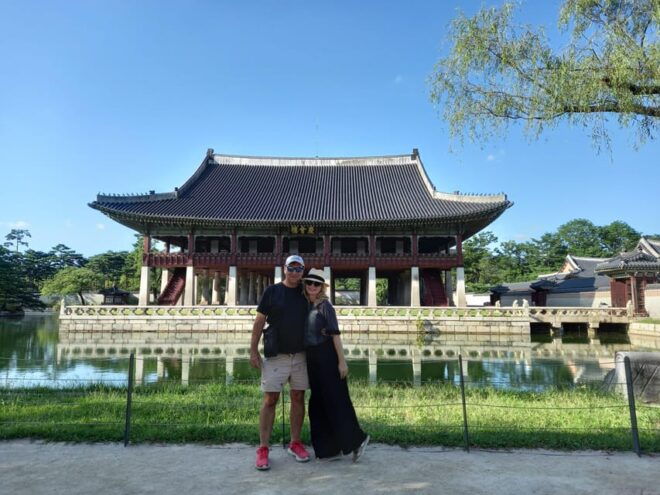
Gwangjang Market buzzes with life, offering an unforgettable culinary adventure where visitors can savor mouthwatering street food and enjoy vibrant local culture.
The market’s bustling stalls serve a variety of traditional dishes, from savory bindaetteok (mung bean pancakes) to sweet tteokbokki (spicy rice cakes). Each bite introduces visitors to the rich flavors of Korean cuisine.
As they navigate the lively aisles, they’re surrounded by the sound of sizzling pans and the chatter of friendly vendors eager to share their culinary secrets.
The lively atmosphere is enhanced by the colorful displays of textiles and handmade goods, showcasing the local craftsmanship.
Gwangjang Market isn’t just about food; it’s a sensory experience that highlights the heart and soul of Seoul’s culture.
More Great Thing To Do NearbyCultural Significance of Joseon Dynasty
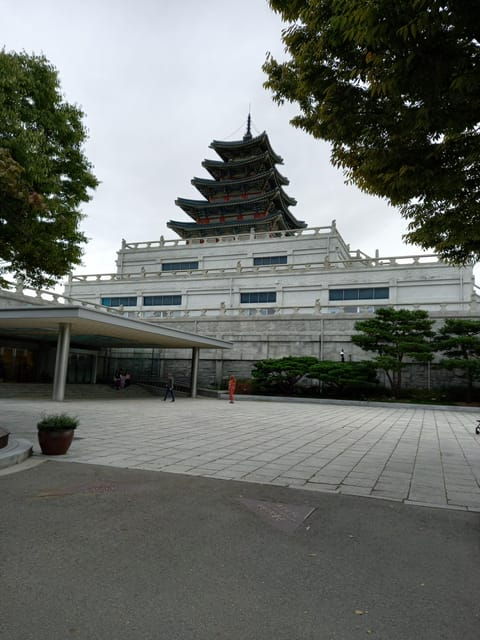
Rich in cultural heritage, the Joseon Dynasty profoundly shaped Korea’s identity through its unique blend of Confucian principles, artistic achievements, and architectural innovations.
This era, spanning over five centuries, emphasized a moral society guided by Confucianism, setting it apart from other East Asian cultures. The dynasty’s commitment to education and governance fostered a flourishing of literature, painting, and music, leaving a lasting imprint on Korean art.
Architecturally, structures like Gyeongbokgung Palace showcase the elegance and symmetry reflective of Joseon ideals. On top of that, the preservation of traditional customs, evident in daily life and festivals, highlights the dynasty’s enduring influence.
Together, these elements contribute to Korea’s rich tapestry of cultural identity, making the Joseon period a cornerstone of its historical narrative.
Enjoy shopping? Other Seoul market tours we've reviewed
- Seoul: Nighttime Tour of Palace, Market, Naksan Park & More
- Seoul: Palace, Temple and Market Guided Foodie Tour at Night
- Best of Seoul Shopping Tour
- Seoul: Noryangjin Fish Market Guided Tour and Food Tasting
- Chennai Shopping Mall Private Tour – Seoul
- Gwangjang Market Netflix Food Walking Tour With Insadong
Tour Inclusions and Details
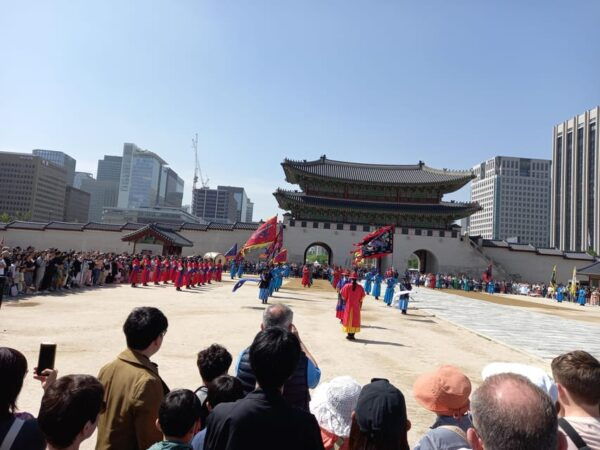
The tour offers a comprehensive package that includes a knowledgeable guide, admission to Gyeongbokgung Palace, and transportation throughout the experience.
Participants enjoy an immersive 6-hour journey, starting from Gwanghwamun Square. The itinerary features a guided exploration of Gyeongbokgung Palace, where guests explore the rich history of the Joseon Dynasty.
Following that, the National Folk Museum showcases cultural traditions, and Bukchon Hanok Village enchants with its traditional architecture. At Gwangjang Market, travelers indulge in delectable Korean street food.
Plus, the package covers guide fees, insurance, and food costs, ensuring a hassle-free adventure.
With free cancellation up to 24 hours in advance, participants can book confidently, knowing they’ll experience the essence of Korea’s cultural heritage.
Customer Reviews and Feedback
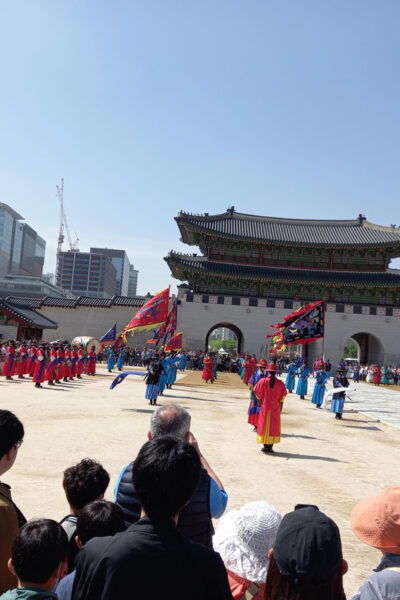
Participants have praised the tour for its engaging guide, who brings the historical and cultural sites to life with their enthusiasm and expertise. They highlight the guide’s extensive knowledge, which enriches the experience at Gyeongbokgung Palace and the National Folk Museum.
Travelers enjoyed exploring Bukchon Hanok Village, captivated by the blend of traditional architecture and modernity. The delightful stop at Gwangjang Market, filled with tantalizing street food, received rave reviews, with many expressing their enjoyment of the local flavors.
While feedback was overwhelmingly positive, some participants suggested minor adjustments, like pacing tips and reminders to stay hydrated. The tour has garnered a perfect rating, affirming its appeal to those seeking an immersive cultural experience.
Tips for a Great Experience
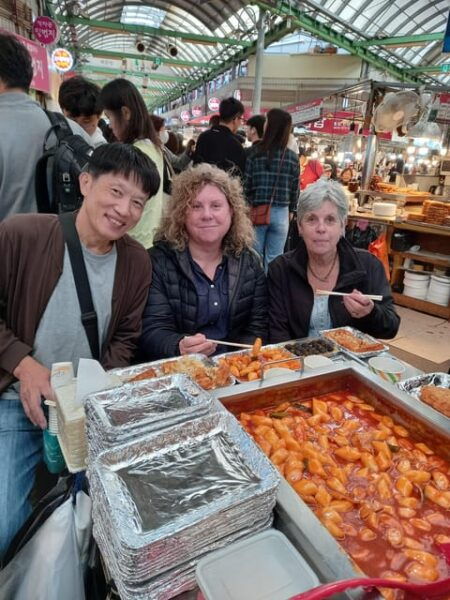
To make the most of this immersive tour, travelers should come prepared with comfortable footwear and a sense of curiosity for the rich history and culture they’ll encounter.
Staying hydrated is essential, especially while exploring the expansive Gyeongbokgung Palace and bustling Gwangjang Market.
Travelers should also bring a camera to capture the stunning architecture and vibrant street food scenes.
Engaging with the knowledgeable guide enhances understanding; asking questions can lead to fascinating insights.
Lastly, consider visiting Insadong afterward for a relaxing coffee or tea, allowing time to reflect on the day’s experiences.
These simple tips ensure a memorable journey through Korea’s cultural tapestry, making the tour truly rewarding.
Questions You May Have
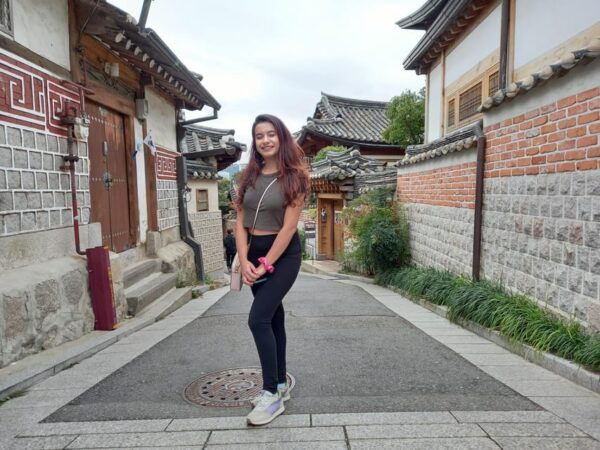
What Is the Best Time to Visit Gyeongbokgung Palace?
The best time to visit Gyeongbokgung Palace is during spring or autumn. Visitors can enjoy pleasant weather, stunning seasonal colors, and fewer crowds, enhancing their experience of this magnificent symbol of Korean heritage and history.
Are There Any Dress Codes for Visiting Traditional Sites?
When visiting traditional sites, visitors should dress respectfully. Light, modest clothing’s encouraged, and comfortable shoes help navigate historical areas. Avoiding overly casual attire shows appreciation for the culture, enhancing the overall experience and connection.
Is Photography Allowed Inside the National Folk Museum?
The museum’s policy allows photography in designated areas, so visitors can capture memories. However, flash and tripods aren’t permitted. It’s best to respect the guidelines, ensuring everyone enjoys the exhibits without disruption.
How Do I Get to Gwanghwamun Square?
To reach Gwanghwamun Square, visitors can take Seoul’s efficient subway system, using Line 5 to Gwanghwamun Station. After a short walk, they’ll find themselves amidst the iconic square, surrounded by historical landmarks and vibrant energy.
Are There Restroom Facilities Available During the Tour?
During the tour, restroom facilities are conveniently available at key stops. The guide ensures everyone knows the locations, so participants can feel comfortable and enjoy their experience without worrying about restroom accessibility.
Break Down
Exploring Gyeongbokgung Palace, the National Folk Museum, Bukchon Hanok Village, and Gwangjang Market immerses visitors in Korea’s vibrant cultural tapestry.
Each site, from the majestic palace to the bustling market, offers a unique glimpse into the country’s history and traditions.
This journey not only celebrates the architectural beauty and culinary delights of Korea but also fosters a deeper appreciation for the enduring legacy of the Joseon Dynasty.
It’s an unforgettable adventure that resonates long after the visit.
You can check if your dates are available here:More Shopping Tours in Seoul
- Seoul: Hanbok, Gyeongbokgung and Tongin Market Walking Tour
- From Seoul: Jisan Ski Resort Serving Breakfast (No Shopping)
- Fortress Night Hike & Snack at a Local Market
- Seoul Gwangjang Market Foody Walking Tour
- From Seoul: Alpaca Farm With Rail Bike/ Luge Racing
- Seoul: Gyeongbokgung Palace Tour & Lunch at Authentic Market
More Museum Tours in Seoul
More Tour Reviews in Seoul
Looking for something different? Other Seoul activities we've written about
- 25 Best Guided Tours In Seoul
- 25 Best Workshops And Classes In Seoul
- 25 Best Shopping Tours In Seoul
- 25 Best Tours In Seoul
- 4 Best Massage And Relaxation Services In Seoul
- 20 Best Historical Tours In Seoul
- 11 Best 3 Day Tours In Seoul
- 20 Best Full-Day Tours In Seoul
- 9 Best Boat Tours And Cruises In Seoul
- 8 Best 4 Day Tours In Seoul
- 18 Best Photography Experiences In Seoul
- 20 Best Private Driver Services In Seoul
